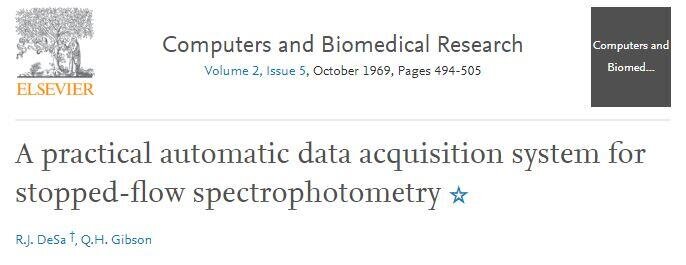Getting The Uv/vis/nir To Work
Getting The Uv/vis/nir To Work
Blog Article
Rumored Buzz on Circularly Polarized Luminescence
Table of ContentsFascination About SpectrophotometersHow Uv/vis/nir can Save You Time, Stress, and Money.10 Simple Techniques For Circularly Polarized LuminescenceFacts About Uv/vis RevealedThe Definitive Guide for Uv/vis/nir

Spectrophotometry is a tool that hinges on the quantitative analysis of particles depending on how much light is taken in by colored substances.
The Single Strategy To Use For Uv/vis/nir
A spectrophotometer is typically used for the measurement of transmittance or reflectance of options, transparent or opaque solids, such as polished glass, or gases. Although numerous biochemicals are colored, as in, they take in visible light and therefore can be measured by colorimetric treatments, even colorless biochemicals can often be converted to colored substances appropriate for chromogenic color-forming responses to yield substances appropriate for colorimetric analysis.: 65 Nevertheless, they can also be designed to determine the diffusivity on any of the listed light ranges that normally cover around 2002500 nm using different controls and calibrations.
An example of an experiment in which spectrophotometry is used is the decision of the equilibrium constant of a solution. A certain chain reaction within an option might take place in a forward and reverse instructions, where reactants form items and items break down into reactants. Eventually, this chain reaction will reach a point of balance called an equilibrium point.
Some Known Details About Spectrophotometers
The quantity of light that travels through the solution is indicative of the concentration of specific chemicals that do not permit light to go through. The absorption of light is due to the interaction of light with the electronic and vibrational modes of particles. Each kind of particle has a specific set of energy levels related to the makeup of its chemical bonds and nuclei and hence will take in light of specific wavelengths, or energies, leading to special spectral properties.
They are widely utilized in lots of industries consisting of semiconductors, laser and optical manufacturing, printing and forensic assessment, as well as in laboratories for the research study of chemical substances. Spectrophotometry is typically used in measurements of enzyme activities, determinations of protein concentrations, decisions of enzymatic kinetic constants, and measurements of ligand binding reactions.: 65 Ultimately, a spectrophotometer is able to determine, depending on the control or calibration, what compounds are present in a target and exactly how much through computations of observed wavelengths.
This would come as a solution to the formerly produced spectrophotometers which were not able to take in the ultraviolet correctly.
9 Easy Facts About Spectrophotometers Explained
It would be discovered that this did not give satisfactory results, for that reason in Model B, there was a shift from a glass to a quartz prism which enabled better absorbance results - UV/Vis (https://nowewyrazy.uw.edu.pl/profil). From there, Model C was born with a modification to the wavelength resolution which wound up having three units of it produced
It irradiates the sample with polychromatic light which the sample soaks up depending on its residential or commercial properties. It is transferred back by grating the photodiode variety which detects the wavelength region of the spectrum. Ever since, the development and application of spectrophotometry gadgets has actually increased profoundly and has actually turned into one of the most ingenious instruments of our time.

Some Of Circularly Polarized Luminescence
The grating can either be Get More Information movable or fixed.
In such systems, the grating is fixed and the strength of each wavelength of light is measured by a various detector in the array. When making transmission measurements, the spectrophotometer quantitatively compares the fraction of light that passes through a recommendation option and a test option, then electronically compares the strengths of the 2 signals and calculates the percentage of transmission of the sample compared to the referral standard.

Report this page